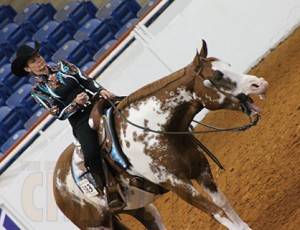Open Wide! Dental Problems in Horses- Loose Incisors
By: Heather Smith Thomas
Claudia True, DVM (Woodside Equine Clinic, Ashland, Virginia and past president of the Virginia Veterinary Medical Association), says one of the biggest problems with older horses is loss of teeth. “The horse’s teeth are continually erupting from the jaw and eventually come to the end of the root and there is nothing left. Some horses become uncomfortable before that point because of a loose tooth. Some are very loose and can be removed easily, while others require more work to extract,” she says.
Spaces between the teeth, especially if they are loose, may become a problem if feed gets packed in there. “This can lead to periodontal disease. If this happens in the upper cheek teeth, sometimes the infection may move upward to the root and create a sinus infection,” says True.
“We are seeing more problems now with the incisors and not just the cheek teeth. One problem, EOTRH (equine odontoclastic tooth resorption and hypercementosis) is seen mostly in the incisors and sometimes in canine teeth, and there is some question regarding whether it may affect the cheek teeth,” she says.
“In the early stages, it might be difficult to see. You may notice that the incisors are becoming a little loose. Some people have noticed that when they feed the horse a carrot, the horse doesn’t want to bite it because the teeth hurt. Unfortunately, this disease is progressive, and we haven’t found a good way to treat it other than extracting the teeth,” she says.
“In later stages, the teeth actually move and become crooked. On X-rays we see that the lower part of the tooth (still inside the gum) becomes bulbous. A normal incisor would appear on a radiograph as a smooth, long tooth that tapers toward the end. With EOTRH we see a tooth that looks fairly normal on the surface, but, underneath the gum, it may be very large and bulbous. Once the tooth starts resorbing, perhaps the body is trying to produce excess cementum to try to keep the tooth solid, rather than falling out.”
Research has not yet found a cause of this disease, but it is seen primarily in older horses and only occasionally in middle-aged horses. “If we can identify it early, we can take radiographs, talk to the client, and start extracting teeth if we need to,” says True.
“Owners often worry about a horse losing the front teeth, but it’s amazing how well these horses manage. I’ve had to take out all the incisors on some horses, in stages, and they go right back to grazing and are so much happier because they are not living with chronic pain,” she says.
These horses can continue to graze even with all the incisors missing. “They learn to use their lips. The first time I extracted all the incisors, I was so nervous about it that I told the owner to gradually re-introduce the horse to grass, but she turned the horse out before the area had fully healed after the extraction. She said the horse did so well grazing.”
In all the cases True has dealt with, she’s never had an owner regret doing this; removing the diseased teeth has given these horses relief. “The one thing veterinarians should remember to tell owners is that the horse’s tongue may hang out, especially when the horse relaxes. The front teeth are no longer there for the tongue to rest against. But most horses, when working, tend to keep their tongues in their mouths,” she says.











